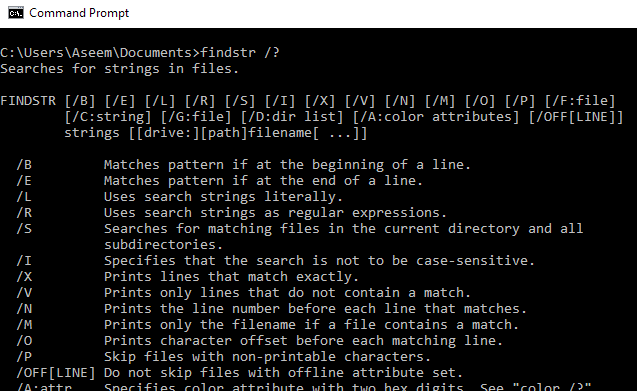

You can also see the lines number for these words are using the -n command. Also, the grep command is the case sensitive therefore you have use -i option to tell the grep command to ignore the case. You can read our post on changing the file permission. If you see the output as permission denied then you will change the permission to see the file. For example, you want to show all the lines of text containing the word “data”, then use the following command. It searches for the given string pattern or text in the file and print all the lines containing the strings. Below some command-line tools for performing these tasks. You can also use the command for searching in the log file or finding some text in the file.

#SEARCH FOR TEXT IN FILES COMMAND LINE HOW TO#
less text_file How to Search for the text file? Type the following command to get control of the text from the keyboard. It uses to paginated text and gives navigation controls to the text file such that you can easily scroll up and downs using the keyboard. cat text_file.txt | cat -n cat text_file.txt | cant -n | tail -n2 For example, I want to display the line numbers with the text output. Just in machine learning, you use the pipeline for the different steps you can use in the Linux also for the commands. Pipeline is the use of one command output with the other command. Head -n3 text_file.txt will display three lines of text-only and in the same way for tail -n3 text_file.txt for the last 3 files. If you want to show some of the numbers of lines then you can use the -n option for the display the custom lines. You can also use the head text_file.txt and tail text_file.txt command to see the beginning of the 10 lines of the text and tail command for the last 10 lines. I want to display all the content on the screen. Lets there is text_file.txt in my directory. It means concatenate the output with the other command. This command is generally used to show the content of the text or the log file on the screen or to another tool. In this section, you will learn how you to view and edit the text or log file using the various Linux Commands. Therefore in this tutorial of how-to, you will know How to Search Text in file using Linux command? Please read the entire tutorial for better remembering. But when it comes to the Linux terminal or the cloud server then it becomes difficult to basic tasks like searching, reading and finding something in the text file.

In systems with the User Interface, you can easily read, scroll and search the text in the log file.
#SEARCH FOR TEXT IN FILES COMMAND LINE MANUAL#
Take a look at the grep manual and the sed manual for more information.After the deployment of your web applications like flask web app e.t.c you must have noticed there is a file maintained for knowing the status of your running web app. For example, say you want to skip the tests/ directory: grep -RiIl -exclude-dir=tests 'search' | xargs sed 's/search/replace/g'Įxclude multiple directories by wrapping them into curly braces, like so: grep -RiIl -exclude-dir= 'search' | xargs sed 's/search/replace/g'īoth grep and sed support regular expressions, so you can search with grep given a specific pattern and then replace the text with sed given another one. You can add the -exclude-dir= parameter to grep if you want to skip a specific directory while searching for files. replace), the g instructs the command to replace all occurrences.įine tuning 1: how to exclude directories while searching s/search/replace/g - this is the substitution command.In the current snippet I'm using it to replace text with the following parameters: Sed is a glorious Unix utility that transforms text. So in this example the output of grep is passed to the next command sed as its argument. This is a little command-line utility that takes what receives in input and passes it as argument to another program. l - print results as a simple list of file names.



 0 kommentar(er)
0 kommentar(er)
